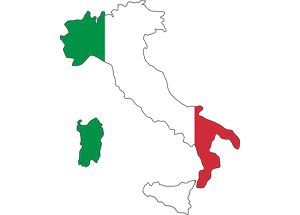As the eighth largest economic power, second largest manufacturer in Europe, and a prime tourist hub, Italy has a number of benefits for business looking to expand overseas. Its prosperous industries open a gateway for a variety of different business models, and the overseas connections are second to none.
Few large companies dominate Italy’s economy, with over 3 million small and medium size businesses making up much of the nation’s prosperity. According to Aster, Italian SMEs are at the top of the European ranking by capacity of attracting funding, ranked 2nd (just behind Spain) and attracting 10% of the total funding across Europe – a total of 800 million euros.
By expanding your business to Italy, you can open up to a wider European market and build a path to global success. First, however, you’ll need to follow these steps:
Write a business plan and conduct market research
Before setting your sights on Italian expansion, a business plan should be in place. While you may already have one, it’s important to define any specific requirements for your overseas expansion, and in-depth knowledge of how feasible your business proposal is before beginning the process for registering a company in Italy.
The business plan should explain what the business is trying to achieve, how it will achieve it and the deadline for these goals. Other than describing the company and its audience, state how you will market the business, the investment and figures, and information on existing employees and hiring overseas.
It’s also necessary to conduct competitor analysis and market research when writing up a business plan. It’s vital to be aware of what your competitors are doing and have an idea of the Italian consumer market. Regarding the competition, the main things to consider are who they are, what they offer, product/service costs, the USP’s of their business, and how you intend to differentiate your own business. Market research will help you conduct your competitor analysis, and by analysing patterns of consumers behaviour it will give you an insight into market trends and any potential opportunities to exploit.
Choose your Italian company structure
There are three major types of Italian company structure for foreign investors: joint stock company (SpA), limited liability company (SrL) and branch offices. When setting up a new company in Italy, it’s important to be clear on the company structure and to abide by the various requirements.
Limited liability companies
Limited liability companies are the most popular format for small to medium businesses in Italy. An SrL company has:
- No restrictions on foreign shareholders
- Requires a 10,000 euro capitalisation to file
- A minimum of one director needs to be in place
- Audited accounts have to be filed annually
Joint stock companies
Joint stock companies are typically more suitable for medium to larger companies. This business entity will:
- Require a higher capital at 120,000 euros
- A minimum of one director
- Offers no restrictions on foreign shareholders
- Audited accounts should be filed with the Registrar of Companies
Branch
Opening an Italian branch office or registered office is another path to Italian incorporation. One of the main differences between a branch and a subsidiary is that a branch is not considered a separate legal entity, and the parent company is fully liable for the obligations and financial situation of the branch.
Unlike the other entities, branches has a few requirements:
- Accounts will need to be maintained with the parent company
- There are no regular reporting audits
- A branch office only requires one director
- A legal representative of the branch will be a domiciled in Italy
- A branch requires a registered office
Subsidiary
A subsidiary is a term for an Italian company owned by a foreign company. This could include a limited company (SRL), or a joint stock company (SPA), and are completely autonomous from the parent company.
Subsidiaries have a few requirements:
- Subsidiaries are to be managed by a board of managers
- The subsidiary will have to keep their own books, submit VAT and income tax returns to the relevant tax authorities
- A subsidiary will not have to file the annual report of the parent company with the Italian Registrar of Companies
Franchising could be another, easier option to other company structures. This works by licensing out a business name or trademark, and taking a percentage of the income. For this option, use your existing business blueprint and license it out to franchises, who will set up and manage the business for you.
In Italy, foreign companies can trade directly through a franchise, agency, distribution agreement or Italian branch. However, there can be no trading activity through a representative office.
Overseas companies don’t require any license seeking to enter a franchise, agency or distribution agreement in Italy. However, Italian branches may need to comply with licensing requirements if they conduct regulated activities. They also are subject to the same social security obligations and formalities as other employers.
Company tax
Tax is most likely one of the most important considerations when expanding your business abroad. Italy’s corporation tax rate has historically been quite high, however in 2017 it was lowered to 24%, and must be paid by all resident companies on income earned in Italy or abroad. Regional tax or IRAP is also required by Italian companies and varies from region to region (4-6%).
VAT is known as IVA in Italy and has a standard rate of 22%. There’s a reduced IVA rate of 4% for certain products including basic food products, social services, some seeds and fertilisers, books and periodicals. As the internal market of the EU is a single market and allows the free movement of services and goods, there are no import duties.
Consider licenses and regulations
Intellectual property
Trademarks, patents, and copyrights are the main forms of Intellectual Property available to businesses.
A patent is an exclusive right granted by the government for inventors to use, manufacture or sell an invention over a number of years. In Italy, patents are typically granted to inventors of machinery, tools, software and chemicals. If any parties utilise or trade the invention without permission from the patentee, they could face legal action.
Trademark registration is made to identify a business graphically and differentiate the brand, which can be a logo, slogan and symbol. For any business expanding in Italy, it’s crucial to register your trademark to secure broad protection. Otherwise if its unregistered and therefore not protected, other business could use your trademark without further action being taken.
Registered trademarks are protected for ten years from the application date, and can be renewed indefinitely for ten-year periods. If any person is found infringing upon registered trademarks, they could be subject to legal action.
Copyright laws protect different forms of work including databases, software, films, music, literature and broadcasting. This recognised protection is for work characterised by originality and creativity. Even though it’s not a necessity to register with the Italian Society of Authors and Publishers for copyright protection, it will give evidence of the publication date, author and rightsholder, in any case when copyright is breached.
Products and packaging regulations
Products and packaging in Italy should meet EU Standards. For example, many products require the CE marking before they are sold in the EEA. The CE marking determines whether the product has been assessed, ensuring it meets EU safety, health and environment protection requirements. If your business is product based, it’s vital to ensure it abides by the EU laws.
Italy abides by all EU regulations, and is stricter in certain sectors such as packaging and labelling.
Ente Nazionale Italiano di Unificazione (UNI) has been running for 100 years, developing and publishing voluntary technical (UNI) standards in all industrial, tertiary and commercial sectors. Comitato Elettrotecnico Italiano (CEI) develops and publishes technical standards for processes, products, electrical systems and installations. If your business is relevant to either of these laws, ensure your product standards abide by them.
Consider imports and exports
In 2017, Italy imported $452.62 billion worth of goods into the country, while exporting $506.23 billion. The country’s top imports include transport and energy products, chemicals, minerals, clothing, textiles, food and beverages. Italy lacks substantial natural oil sources, minerals and metals, and imports them in order to manufacture goods. Italy’s popular exports include machinery, metal products, motor vehicles, clothing, footwear, motorcycles, scooters and luxury vehicles. Over 56% of the country’s exports are send to other EU nations.
All US exports to the European Union have a 3% tariff, while some products have additional rules and require certain licenses. Import duty rates vary in Italy from 0-17% depending on the type of import. For example, for any imports worth less than €150, import tax isn’t applied. Additional fees may also be applied depending on the type of product and if they need to be examined, or verified. The VAT rate stands at 22% as of 2018, and is applied to imports with the cost of shipping and insurance.
Market entry strategy
Making personal relationships is vital for doing business in Italy, and can help toward your entry into the market. You’ll need to find the right Italian agent, distributor or business partner for a smooth entry into the Italian market.
Italy has a diversified industrial economy and is divided into the developed north and the agricultural south. The north is a thriving region, dominated with private companies and large firms, whilst the less-developed south is home to more SMEs, with a strong focus on the agricultural industry. Weighing up the regions, there are benefits for both, and your choice of location will primarily depend on the type of business, and which Italian base is the most suitable.








